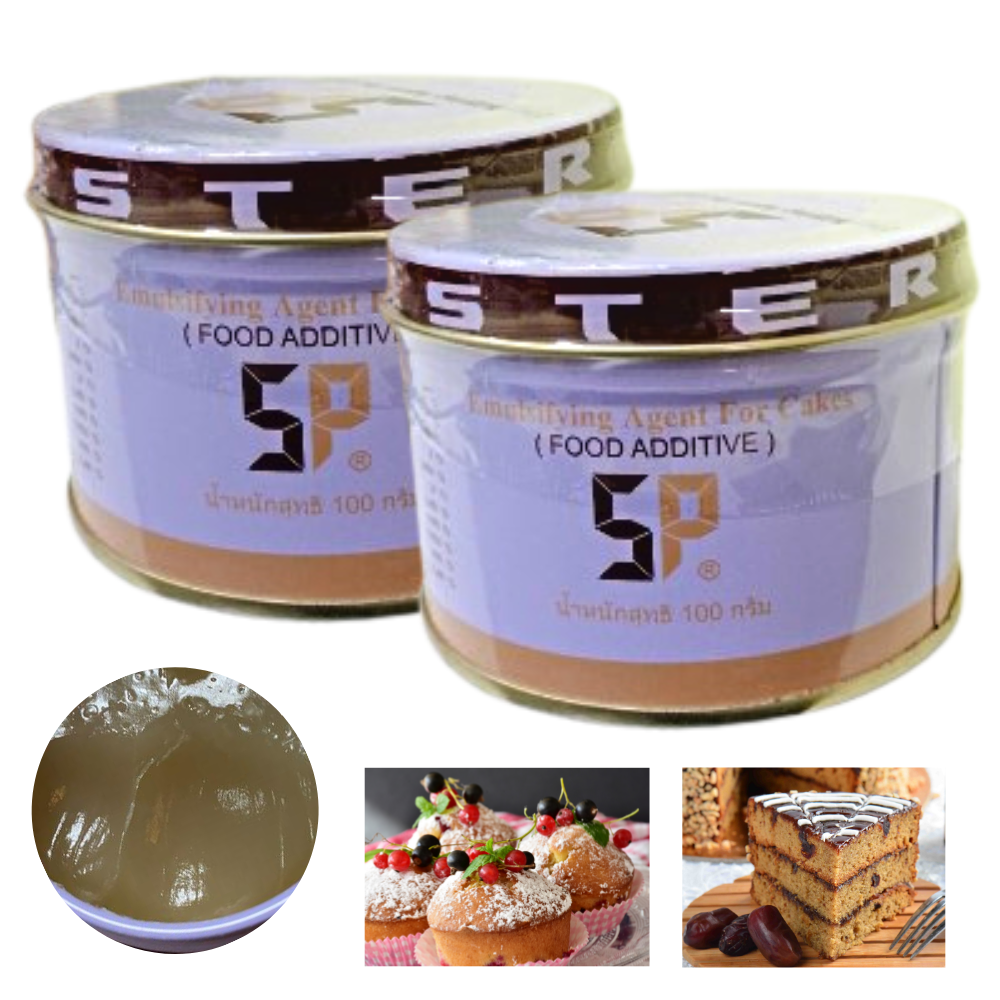10 Reasons Why Emulsifier In Food Enhances Texture and Stability
Find out Exactly How an Emulsifier in Food Can Assist Achieve Flawlessly Blended Dishes Every Single Time
Emulsifiers are vital components in the cooking world, enabling the blending of oil and water-based parts. Their capability to reduce surface stress permits the development of steady combinations, enhancing both texture and flavor in different meals. Understanding how these substances feature can transform the method one approaches food preparation. Yet, numerous remain not aware of the various types of emulsifiers and their particular applications. Exploring this topic discloses useful insights for achieving cooking excellence.
What Are Emulsifiers and Just How Do They Work?
Emulsifiers play a necessary role in the food industry by enabling the stable blending of components that typically do not incorporate, such as oil and water. These materials possess both hydrophilic (water-attracting) and hydrophobic (water-repelling) residential properties, permitting them to connect with both sorts of ingredients. When an emulsifier is included in a mix, it minimizes the surface area tension between the oil and water, helping with the formation of small droplets of one fluid spread within the other. This process produces a stable solution, avoiding splitting up over time and improving appearance and mouthfeel. Emulsifiers are essential in numerous food items, from salad dressings to ice creams, ensuring consistency and quality. They additionally add to the general sensory experience of food, influencing flavor release and aesthetic allure. Understanding how emulsifiers function is crucial for food researchers and cooks alike, as they seek to develop delightful and well balanced cooking experiences.
Usual Kinds of Emulsifiers Utilized in Food Preparation
Countless types of emulsifiers are made use of in food preparation to accomplish desired textures and security in various food products. Usual emulsifiers consist of lecithin, which is naturally found in egg yolks and soybeans, and is extensively utilized in mayonnaise and dressings. Another prevalent emulsifier is mustard, which contains substances that assist blend oil and water in sauces.
Additionally, business emulsifiers such as mono- and diglycerides are typically contributed to refined foods to enhance their security and enhance service life. Starch-based emulsifiers, stemmed from corn or potatoes, are likewise employed in sauces and puddings for enlarging and structure. Lastly, casein, a milk healthy protein, offers as an emulsifying agent in milk products like cheese and lotion. Each of these emulsifiers plays an essential function in guaranteeing that active ingredients blend flawlessly, providing the wanted consistency and taste in culinary developments.
The Scientific research Behind Emulsification

The stability of a solution counts on the balance between the forces acting on the dispersed droplets. If the beads integrate, the solution can damage, causing splitting up. Different aspects, such as temperature, concentration of the emulsifier, and the method of blending, affect the success of emulsification. Recognizing this clinical foundation is vital for accomplishing consistent lead to culinary applications involving solutions.
Tips for Making Use Of Emulsifiers in Your Recipes
When incorporating emulsifiers into dishes, mindful consideration of their buildings and capability can substantially improve the end product. One must choose the appropriate emulsifier based on the wanted structure and stability of the meal. Typical options consist of mustard, lecithin, and egg yolks, each offering distinct advantages
It's vital to understand the temperature level at which the emulsifier operates finest; as an example, some emulsifiers function efficiently at area temperature, while others call for warm. Progressively adding oil to the emulsifier while blending can aid create a secure emulsion.
In addition, the ratio of emulsifier to fluid is vital; inadequate may lead to separation, while excessive can produce an unwanted texture. Proper storage space problems should be considered, as some emulsified items might require refrigeration to preserve security and quality. By following these ideas, chefs can visite site achieve continually well-blended recipes.

Delicious Recipes Featuring Emulsifiers
While numerous cooks may not realize it, integrating emulsifiers into recipes can elevate meals to new elevations of taste and appearance. A classic vinaigrette benefits greatly from the enhancement of mustard, which acts as an emulsifier, giving a smooth uniformity that binds oil and vinegar effortlessly. Likewise, homemade mayo showcases the power of egg yolks, developing a velvety, extravagant sauce best for sandwiches and salads.
In cooking, emulsifiers like lecithin can assist achieve a tender crumb in muffins and cakes, boosting wetness retention. A rich delicious chocolate ganache, made with whipping cream and delicious chocolate, can likewise incorporate an emulsifier to maintain a smooth surface. Additionally, ice lotions typically utilize emulsifiers to assure a velvety texture and protect against ice crystal formation, causing a wonderful treat experience. By incorporating these emulsifying representatives, cooks can create meals that thrill the taste and offer a satisfying mouthfeel.
Often Asked Questions
Are Emulsifiers Safe for Individuals With Food Allergies?
Emulsifiers can be safe for people with food allergic reactions, depending upon the details emulsifier utilized. Cross-reactivity and specific sensitivities differ; consequently, seeking advice from a medical care expert is suggested to guarantee security.
Can I Make My Very Own Emulsifier in your home?
Yes, people can create homemade emulsifiers utilizing components like egg yolks, mustard, or honey. These all-natural options can efficiently blend oils and water-based elements, supplying a simple service for different culinary applications.
How Do Emulsifiers Impact the Nutritional Worth of Food?
Emulsifiers can boost the dietary worth of food by boosting nutrient absorption and security. However, excessive usage may result in negative results, possibly modifying food digestion procedures and influencing intestine wellness in delicate individuals.


Exist Any Adverse Side Effects of Consuming Emulsifiers?
Some researches suggest that eating emulsifiers may bring about gastrointestinal issues or disrupt digestive tract microbiota balance. Additional research study is necessary to completely understand their lasting impacts on health and wellness and prospective adverse side effects.
Can Emulsifiers Modification the Flavor of My Dishes?
Emulsifiers can discreetly change the flavor profile of dishes. By improving appearance and mouthfeel, they may make flavors much more well balanced or noticable, yet they generally do not convey solid preferences by themselves.
Emulsifiers play an important role in the food industry by enabling the steady mixing of components that generally do not integrate, such as oil and water. Many types of emulsifiers are utilized in food preparation to accomplish desired structures and security in numerous food items. Additionally, business emulsifiers such as mono- and diglycerides are commonly included to see it here processed foods to boost their stability and improve rack life. It's crucial to understand the temperature level at which the emulsifier functions best; for circumstances, some emulsifiers function successfully at room temperature level, while others need warmth (Emulsifier In Food). Emulsifiers can be secure for people with food allergies, depending on the specific emulsifier utilized